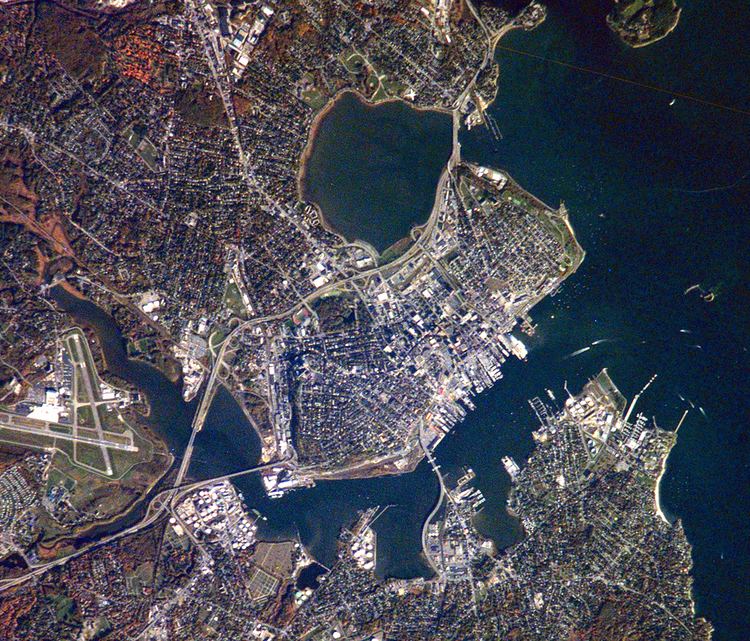Local time Monday 2:17 PM | ||
 | ||
Weather 11°C, Wind W at 29 km/h, 30% Humidity Restaurants Valley Chinese Cuisine, Woodford Food & Beverage, Bayou Kitchen, Fleet Feet Sports Maine Ru, Thurston's Wicked Good Bur | ||
Back Cove is an estuary basin on the northern side of the City of Portland, Maine's downtown district. It is nearly circular and about one mile in diameter. A popular loop trail runs around the circumference of the cove. Being tidal, Back Cove dries out to mud flats at low tide and is not commercially navigable. It is sometimes incorrectly referred to as Back Bay.
Contents
Map of Back Cove, Portland, ME, USA
Baxter Boulevard
Baxter Boulevard is a road and parkway that wraps around the west side of Back Cove. The roadway served as the means to head north from downtown Portland before Tukey's Bridge, now on I-295, was built. The road was part of US Route 1 until May 2007.
The parkway and roadway began as an initiative of Mayor James Phinney Baxter, for whom it is named. It was envisioned as one of four parks in the city (along with Deering Oaks, Western Promenade and Eastern Promenade) which would encircle the city. The parkway was designed by the noted landscape design firm Olmsted, Olmsted and Eliot in 1895. Property owners donated the land next to the cove and the walking and biking path were filled in. Originally called the Back Cove Boulevard, the parkway opened in 1917. It covers 30 acres (12 ha) and the pathway is 2.25 miles (3.62 km) in length.
Tree planting began on the Boulevard in 1921 as a memorial to World War I victims.
Baxter Boulevard was listed on the National Register of Historic Places as a historic landscape district in October 1989.
A 3.6 miles (5.8 km) recreation path encircles Back Cove. An offshoot in the stretch that runs parallel to I-295 leads to East End Beach.
